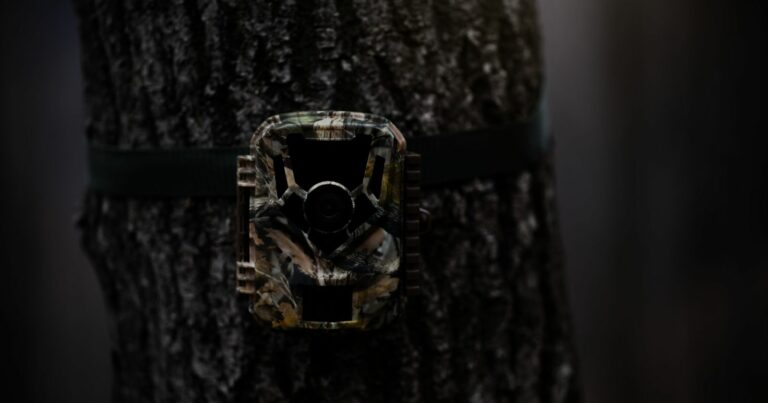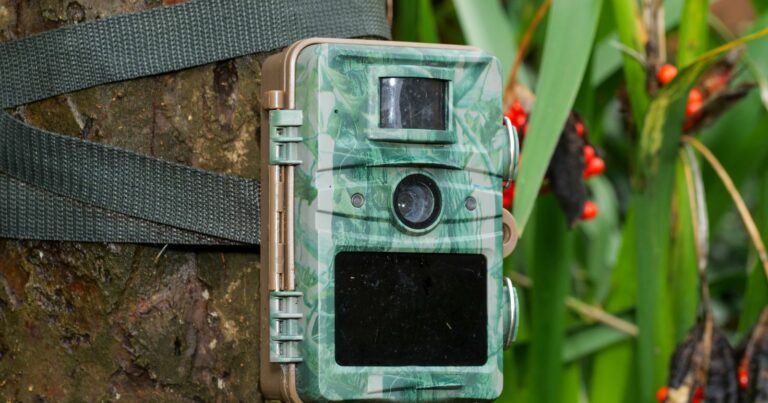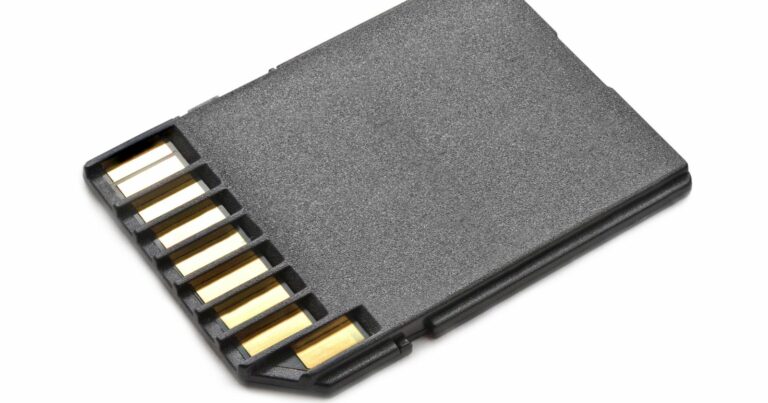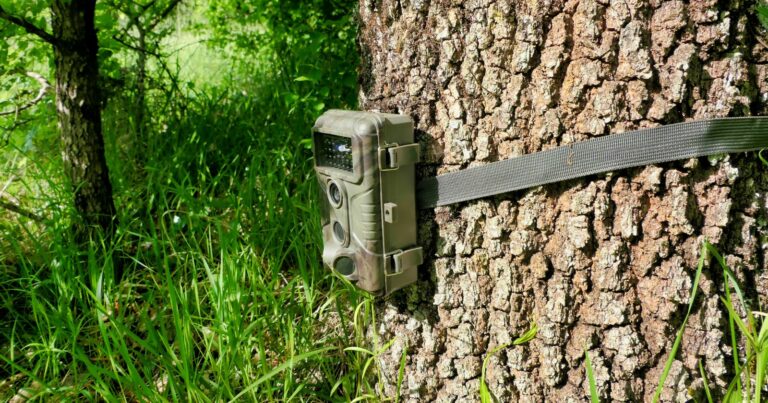Keep Your Trail Cameras Hidden from Prying Eyes
Do you worry about people spotting and stealing your trail cameras? Do you want your cameras to blend seamlessly into nature? With the right techniques, you can discretely hide your trail cams from prying eyes.
As an avid hunter and outdoorsman, I rely on trail cameras to pattern deer and wildlife on my land. But I don’t want trespassing hikers or thieves finding my expensive gear and ruining my scouting.
In this post, I’ll share expert tips to conceal your trail cameras for maximum stealth. You’ll learn clever camouflaging tricks using natural materials that allow the cameras to blend into their surroundings unnoticed. I’ll also cover optimal mounting locations above eye level and ways to disguise the cameras in plain sight.
Follow my advice on disguising scent and minimizing site visits, and your cameras can operate incognito. With these simple but effective concealment strategies, your eyes in the woods will go undetected while capturing amazing wildlife images. Read on to master the art of hiding trail cameras from humans! Let’s get started.
The key is choosing less-traveled locations away from human activity and using camouflage techniques. Elevating cameras above eye level and avoiding frequent site visits also help them go unnoticed. With strategic placement and disguise, your cameras can discreetly monitor wildlife day and night.
Choose Inconspicuous Camera Locations
The first key to concealed trail cameras is placement in low-traffic areas away from human activity:
- Place cameras off main trails where hikers and others are unlikely to roam.
- Avoid game trails that follow valley bottoms and creek beds popular with humans.
- Locate cameras deeper into your property away from boundaries.
- Position cameras far from camping areas, popular scenic spots, and other high-use areas.
- Mount cameras where natural barriers help block them from view.
Taking the time to scout and find more secluded locations is worth it to keep your cameras undiscovered.
Expert Camouflage Techniques
Once you find the perfect low-key spot, use camouflage techniques to further conceal your camera:
Blend with Natural Materials
Cover your camera housing in sticks, leaves, pine needles, moss or other local vegetation to mimic the surroundings. Avoid completely obstructing the lens.
Use Camo Wraps
Wrap your camera in camouflage-patterned wraps or tape that match vegetation colors and patterns.
Spray Paint Camo Patterns
Use flat spray paint on your camera to create woodland camo patterns and textures. Stencil or freehand natural shapes and shades.
Brush In With Mesh
Conceal with a 3D leafy mesh wrap or ghillie suit fabric fitted over your camera.
Use Camo Housing
Choose camera models that come with camo-colored housings to blend into habitats.
With the right camo approach, your gear can disappear against trees, brush and forest floors.
Mount Cameras Above Eye Level
Mounting cameras high helps keep them out of sight:
- Install 10-15 feet up on sturdy tree trunks using mounting straps.
- Mount on telephone poles or fence posts using bracket mounts.
- Use extendable camera poles to easily place cameras 12+ feet high.
- Angle camera lenses slightly down to maximize coverage.
The higher you mount your camera, the harder it will be to spot by passersby.
Disguise Cameras in Plain Sight
With clever disguises, you can hide cameras right under people’s noses:
- Place inside birdhouses, owl boxes or wood duck boxes with hole cut for lens.
- Mount inside fake rocks, stumps, pine cones, or other decoys.
- Conceal in the overgrown base of a hollow tree.
- Use plastic utility box or PVC pipe camouflaged as brush.
- Build a concealed enclosure using bark siding, vines and living vegetation.
Your creativity is the limit for disguising trail cameras!
Use Scent Control Measures
Your human scent can draw unwanted attention and trampling of camera sites. Use these scent control tips:
- Wear rubber boots and latex gloves when handling cameras.
- Spray down cameras and trees with scent-masking spray.
- Store cameras with wafers of activated charcoal to absorb odors.
- Transport cameras to sites in resealable plastic totes or bags.
Masking human smells helps keep people and animals away from your cameras.
Minimize Site Visits
Your frequent site visits can get your cameras discovered. Here’s how to reduce trips:
- Use longer-life lithium batteries to extend time between changes.
- Install high-capacity memory cards to store more images before swapping.
- Enable cellular trail cameras to monitor images remotely.
- Adjust settings conservatively to limit false triggers.
- Schedule necessary trips during low-use hours like early morning.
The less you visit cameras, the more concealed they will remain.
Conclusion
With strategic placement in secluded spots, camouflage materials, elevated mounting, creative disguises and scent control, you can keep your trail cameras hidden from unwanted eyes.
Use these proven techniques, and your cameras can operate incognito for months while delivering amazing wildlife footage. Just be sure to note camera locations so you can find them again later!
Have any other great tips for concealing trail cams? Share them below!







